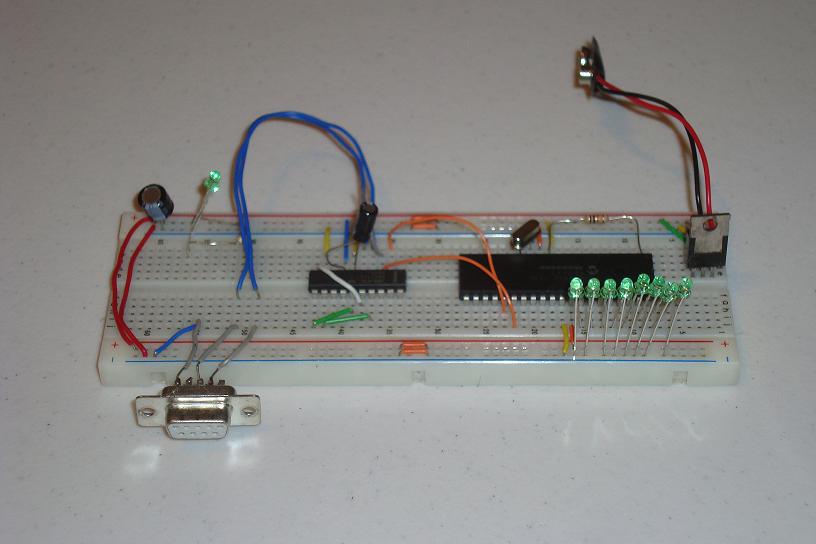Pengertian Serial Digital Interface Tutorial

What's Wrong with Serial Ports? A common serial port, the kind with TX and RX lines, is called “asynchronous” (not synchronous) because there is no control over when data is sent or any guarantee that both sides are running at precisely the same rate. Since computers normally rely on everything being synchronized to a single “clock” (the main crystal attached to a computer that drives everything), this can be a problem when two systems with slightly different clocks try to communicate with each other. To work around this problem, asynchronous serial connections add extra start and stop bits to each byte help the receiver sync up to data as it arrives. Both sides must also agree on the transmission speed (such as 9600 bits per second) in advance.
BH1750 Digital Light Sensor: BH1750FVI Is a Digital Light sensor, which is an digital Ambient Light Sensor IC for I2C bus interface. This IC is the most suitable to. First program: Read the Lux value via serial Port. Code: /* This is a simple code to. Super clear tutorial, works like a charm!!! Controlling a Digital Potentiometer Using SPI. In this tutorial you will learn how to control the AD5206 digital potentiometer using Serial Peripheral Interface (SPI). For an explanation of SPI see the SPI Library reference.
Slight differences in the transmission rate aren’t a problem because the receiver re-syncs at the start of each byte. (By the way, if you noticed that “11001010” does not equal 0x53 in the above diagram, kudos to your attention to detail. Serial protocols will often send the least significant bits first, so the smallest bit is on the far left. The lower nybble is actually 0011 = 0x3, and the upper nybble is 0101 = 0x5.) Asynchronous serial works just fine, but has a lot of overhead in both the extra start and stop bits sent with every byte, and the complex hardware required to send and receive data.
And as you’ve probably noticed in your own projects, if both sides aren’t set to the same speed, the received data will be garbage. This is because the receiver is sampling the bits at very specific times (the arrows in the above diagram). If the receiver is looking at the wrong times, it will see the wrong bits. A Synchronous Solution SPI works in a slightly different manner. It’s a “synchronous” data bus, which means that it uses separate lines for data and a “clock” that keeps both sides in perfect sync. The clock is an oscillating signal that tells the receiver exactly when to sample the bits on the data line.  This could be the rising (low to high) or falling (high to low) edge of the clock signal; the datasheet will specify which one to use.
This could be the rising (low to high) or falling (high to low) edge of the clock signal; the datasheet will specify which one to use.
When the receiver detects that edge, it will immediately look at the data line to read the next bit (see the arrows in the below diagram). Intel hd graphics driver for dell vostro 1015 تعريفات. Because the clock is sent along with the data, specifying the speed isn’t important, although devices will have a top speed at which they can operate (We’ll discuss choosing the proper clock edge and speed in a bit). One reason that SPI is so popular is that the receiving hardware can be a simple. This is a much simpler (and cheaper!) piece of hardware than the full-up UART (Universal Asynchronous Receiver / Transmitter) that asynchronous serial requires. Receiving Data You might be thinking to yourself, self, that sounds great for one-way communications, but how do you send data back in the opposite direction? Here’s where things get slightly more complicated. In SPI, only one side generates the clock signal (usually called CLK or SCK for Serial ClocK).
The side that generates the clock is called the “master”, and the other side is called the “slave”. There is always only one master (which is almost always your microcontroller), but there can be multiple slaves (more on this in a bit). When data is sent from the master to a slave, it’s sent on a data line called MOSI, for “Master Out / Slave In”.

If the slave needs to send a response back to the master, the master will continue to generate a prearranged number of clock cycles, and the slave will put the data onto a third data line called MISO, for “Master In / Slave Out”. Notice we said “prearranged” in the above description. Because the master always generates the clock signal, it must know in advance when a slave needs to return data and how much data will be returned.
- вторник 09 октября
- 45